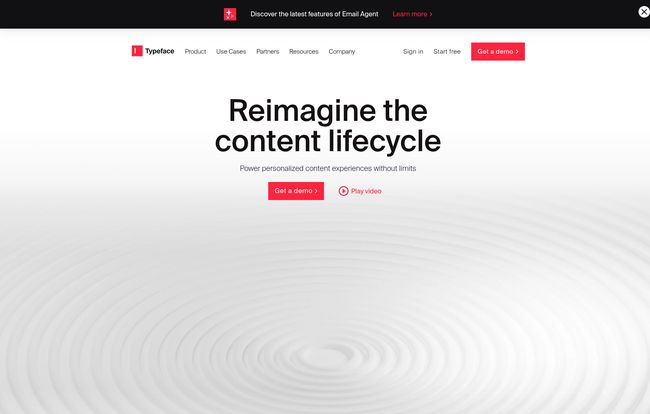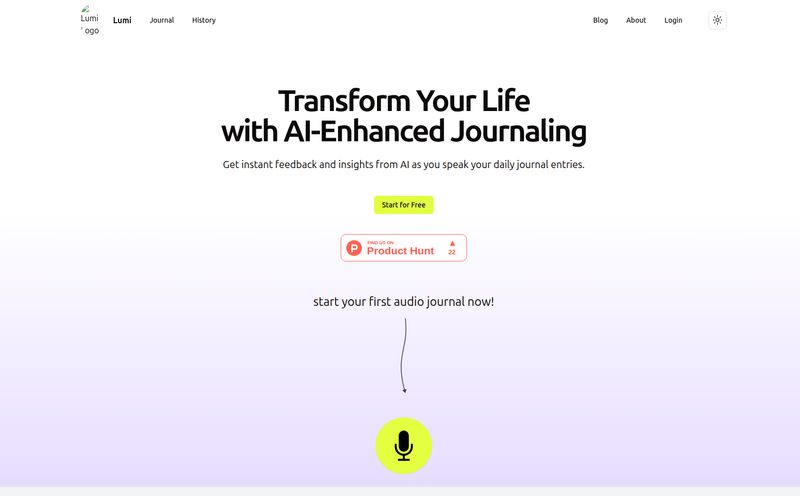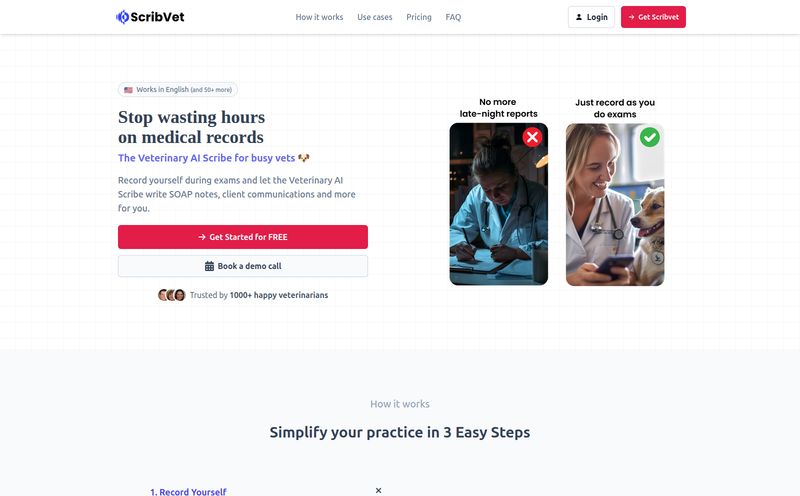The generative AI space is getting crowded. It feels like every week there’s a new tool that promises to revolutionize how we write, design, and create. As someone who’s been in the SEO and content trenches for years, I've seen these waves come and go. Most are just ripples in a pond. But every now and then, a real tsunami comes along. I’ve been keeping a close eye on Typeface, and I have to say… this one feels different.
It’s not just another GPT-4 wrapper with a fancy user interface. It’s aiming for something much, much bigger. It’s built for the enterprise—the big leagues, where brand voice isn't just a suggestion, it's the law. And that’s a problem most AI tools just haven’t cracked yet.

Visit Typeface
So, What Is Typeface, Really?
In a nutshell, Typeface is a generative AI platform specifically designed for large businesses to create personalized, on-brand content at a speed that would make your head spin. We’re talking about companies like Verizon, P&G, and LVMH, who are listed as their clients. These aren't small shops; they're global giants whose brand consistency is measured in the millions of dollars.
Instead of giving you a blank canvas and saying “go wild,” Typeface starts by learning you. It’s designed to be a central intelligence for your brand’s entire content operation. It’s less of a wild, creative artist and more of a highly-trained, on-brand corporate communications director who also happens to work at light speed. A pretty compelling pitch, right?
The Core Features That Actually Matter to Marketers
I’ve seen a million feature lists. Most are just noise. But Typeface has a few core components that genuinely made me sit up and pay attention. They’ve clearly thought about the real-world headaches of a corporate marketing department.
Giving Your Brand a Memory with ‘Blend’
This is the secret sauce, in my opinion. The “Blend” feature is where Typeface ingests your brand’s unique style. It learns your tone of voice, your personas, your product details, and even legal disclaimers. Think of it like onboarding a new marketing hire. Except this hire has a photographic memory and can instantly apply that knowledge to every single piece of content it touches. No more rogue blog posts that sound like they were written by a completely different company. This feature alone is a solution to a problem I’ve seen plague even the most buttoned-up organizations.
Automating Your Grind with ‘Flow’
Every marketing team runs on workflows, whether they’re beautifully documented or just exist in the CMO’s head. Typeface’s “Flow” feature brings this into the AI. It lets you create multi-step templates for common tasks. Need to turn a press release into a blog post, three social media updates, and an email newsletter? You can build a Flow for that. It’s about taking the repetitive, soul-crushing parts of content repurposing and putting them on autopilot. This is how you achieve scale without hiring an army of junior marketers.
Meet Your New AI Teammates
This part is pretty cool. Typeface frames its AI capabilities as a team of “Agents.” You have an Ideation Agent to brainstorm, a Creative Agent to draft copy and images, a Workflow Agent to handle the multi-step processes we just talked about, and a Performance Agent to analyze what’s working. It’s a smart way to package the technology, making it feel more like a collaborator than just a cold, unfeeling tool. It helps users conceptualize how to use the platform for different stages of the content lifecycle.
Finally, AI with a Safety Net
Here’s the big one for any corporate legal or brand team. The “wild west” nature of many consumer AI tools is a non-starter for big companies. A single off-brand or problematic output could be a PR nightmare. Typeface is built around brand safety, trust, and governance. It provides guardrails to ensure content adheres to brand guidelines, and its integrations with platforms like Microsoft Teams suggest its built for secure, collaborative environments. This isn't just a feature; it’s a prerequisite for their target customer.
The Good, The Not-So-Good, and The AI Conundrum
No tool is perfect, and it’s important to go in with eyes wide open. From my perspective, the advantages are pretty clear. The ability to create a massive volume of consistent, on-brand content is the holy grail for any large marketing org. It solves the dilution of brand voice that naturally happens when you have hundreds of people across different departments and agencies creating content. Integrating directly into existing workflows is another massive plus, meaning it’s less likely to become another piece of abandoned “shelfware.”
On the flip side, there are things to consider. A system this powerful isn't a simple plug-and-play toy. There will be an initial setup period to properly 'teach' the AI your brand with the Blend feature. You can't just throw it a link to your homepage and expect magic. It requires a thoughtful investment of time upfront. And then there's the age-old debate: does relying heavily on AI for creation diminish human creativity? I'd argue it depends on how you use it. If you use it to automate the boring stuff so your human creatives can focus on high-level strategy and truly novel ideas, it’s a win. If you just use it as a content mill, you might lose some of that human spark. It’s a tool, and its impact depends on the artisan weilding it.
What's the Damage? A Look at Typeface Pricing
Ah, the question everyone wants to be answered. If you're looking for a simple pricing page with three neat tiers, you're out of luck. In classic enterprise SaaS fashion, Typeface uses a “Get a demo” model.
This means pricing is almost certainly custom and based on your company’s specific needs—number of users, volume of content, level of support, etc. Don't expect it to be cheap. This is a platform aimed at solving enterprise-level problems, and it will have an enterprise-level price tag to match. This isn’t for the solo blogger or the small startup. This is for teams with a significant content budget who can calculate a clear ROI on brand consistency and production speed.
Frequently Asked Questions About Typeface
How is Typeface different from ChatGPT or other general AI writers?
The main difference is the focus on the enterprise. While tools like ChatGPT are general-purpose, Typeface is specifically designed to learn and maintain a single company's brand voice, style, and product information. Its features for brand safety, workflow automation, and governance are built for the needs of large, structured organizations.
Is Typeface safe for large brands to use?
Yes, brand safety is a core pillar of the platform. Typeface emphasizes its security, governance, and control features that act as guardrails to ensure all generated content is compliant and on-brand. This is one of its primary selling points for corporate clients.
Do I need to be a technical expert to use Typeface?
While the underlying technology is complex, the user interface is designed to be intuitive for marketing teams. There is an initial setup process to personalize the AI to your brand, which may require some dedicated effort, but day-to-day use is meant to be straightforward for content creators and marketers.
What kind of content can I create with Typeface?
You can create a wide range of marketing and communications content, including email marketing campaigns, ad copy, social media posts, blogs, landing pages, and even internal communications. The 'Flow' feature is particularly useful for repurposing one piece of content into many different formats.
How much does Typeface cost?
Typeface does not list public pricing. It operates on a custom pricing model typical for enterprise software. You'll need to contact their sales team and get a demo to receive a quote based on your company's size and needs.
The Final Verdict: Is Typeface the Real Deal?
After digging in, I’m genuinely impressed. Typeface isn't trying to be everything to everyone. It has a laser focus on the enterprise market and has built a platform that addresses their biggest content pain points: scale, consistency, and safety. It's a serious tool for serious businesses.
If you're a small business or a solo creator, this is probably overkill. But if you’re part of a large organization struggling to keep your brand's voice coherent across dozens of teams and thousands of pieces of content, Typeface could be the answer you've been looking for. It’s one of the first AI content platforms I’ve seen that truly feels like it was built with the realities of the corporate world in mind. It's not just another tool; it's a content operating system. And that might just be the tsunami the industry has been waiting for.



